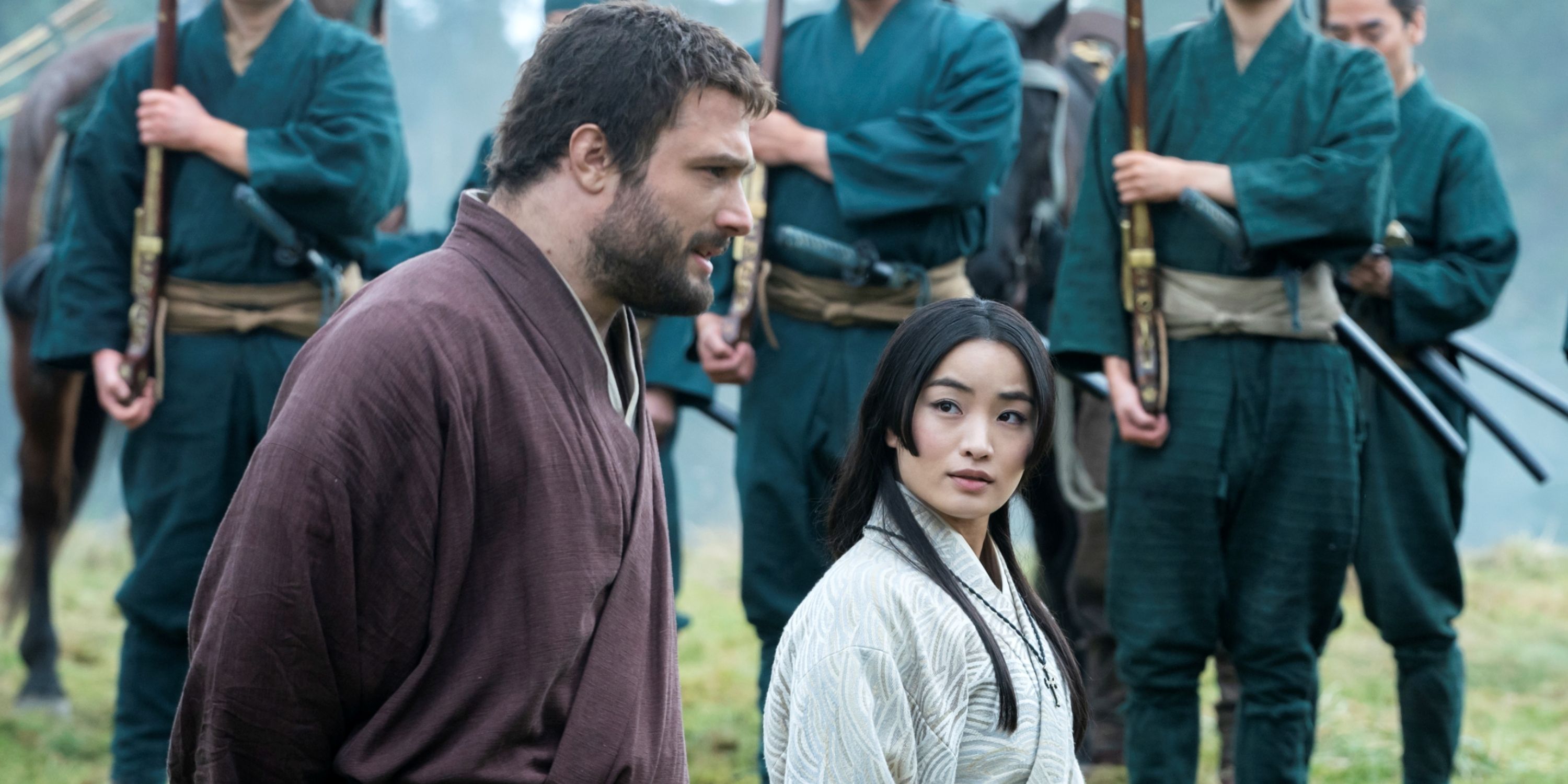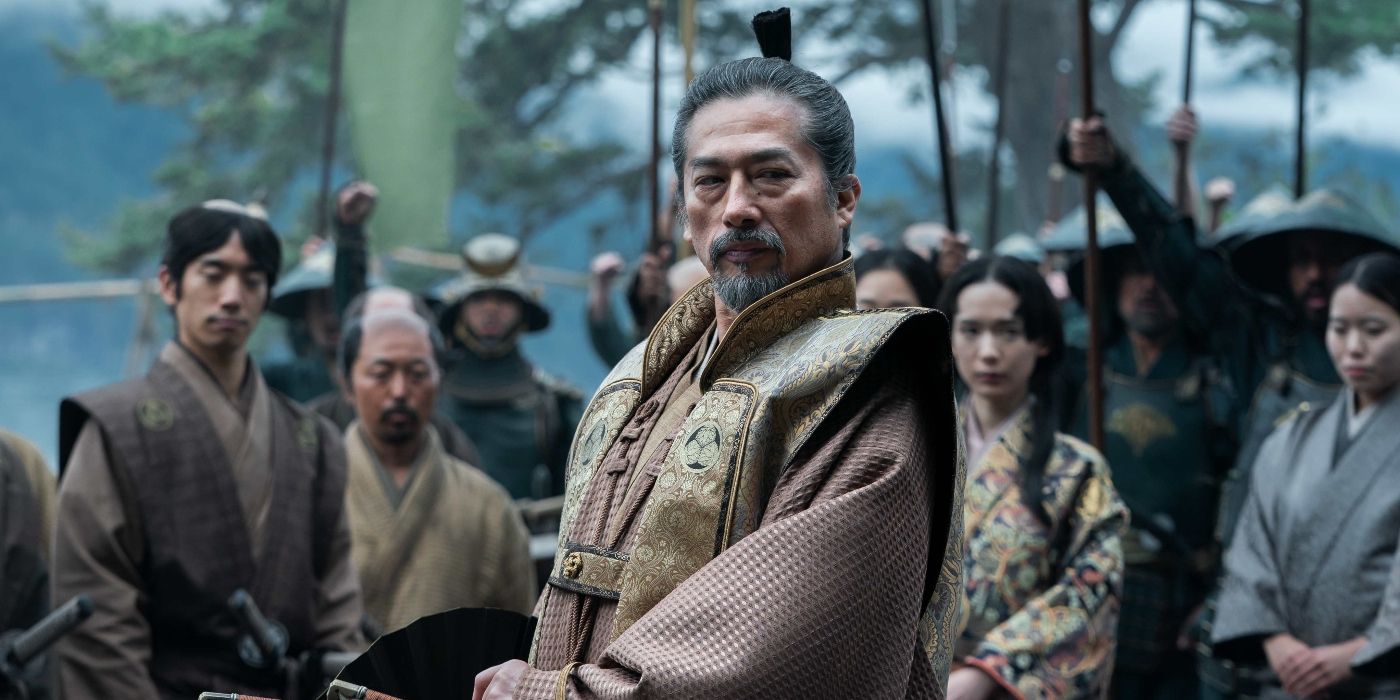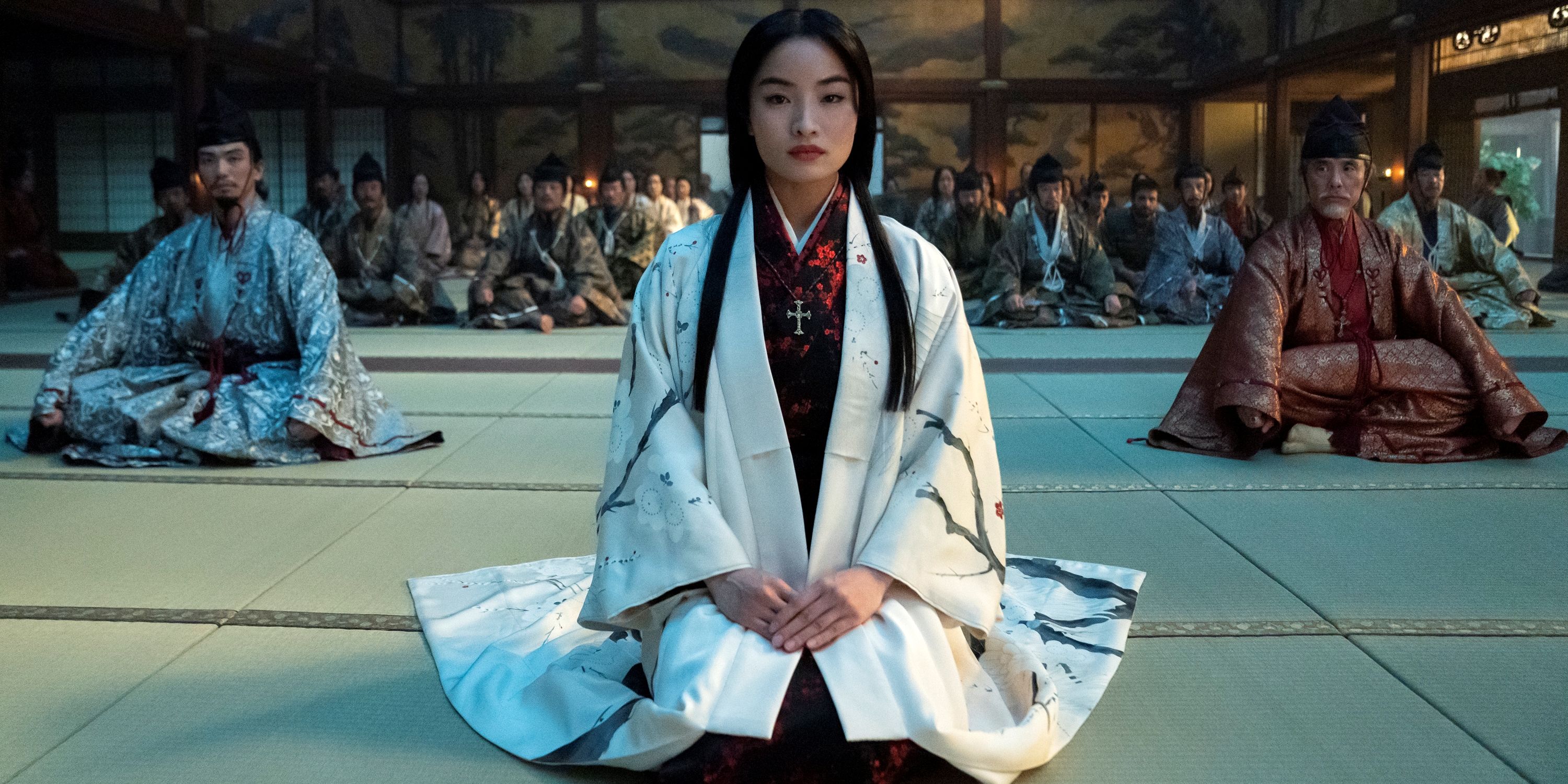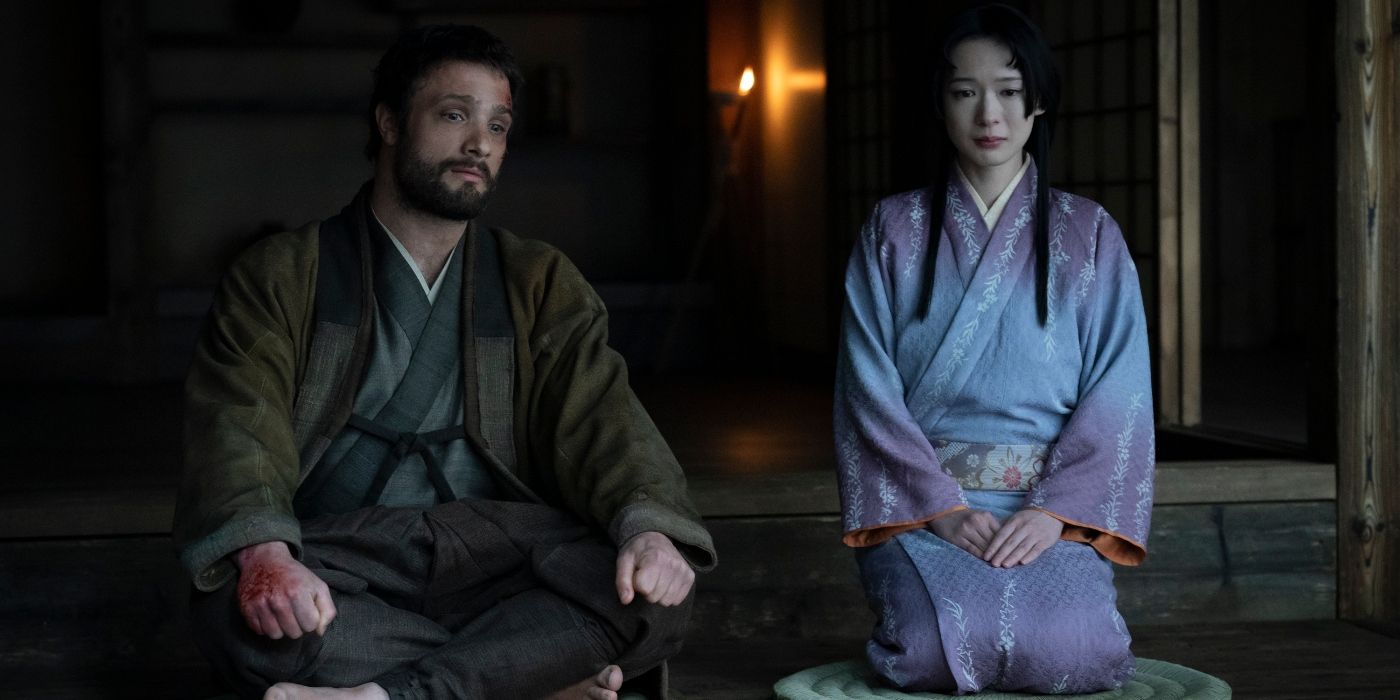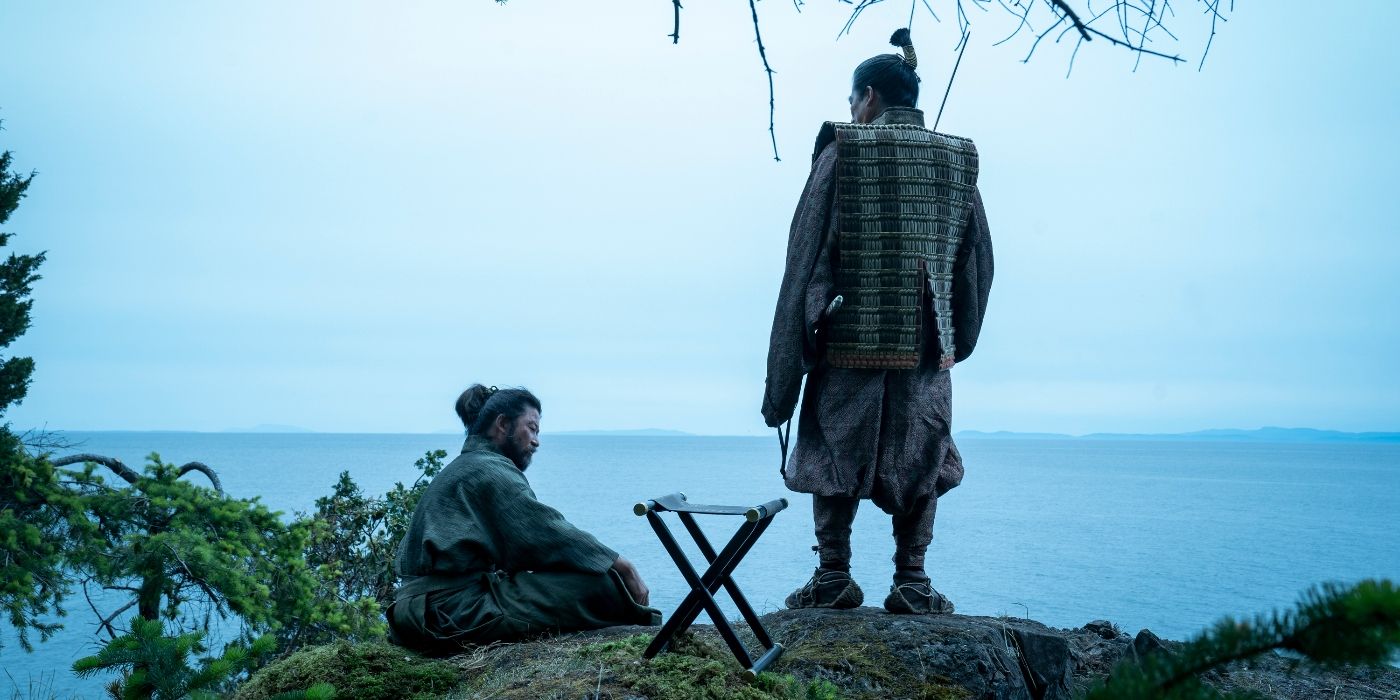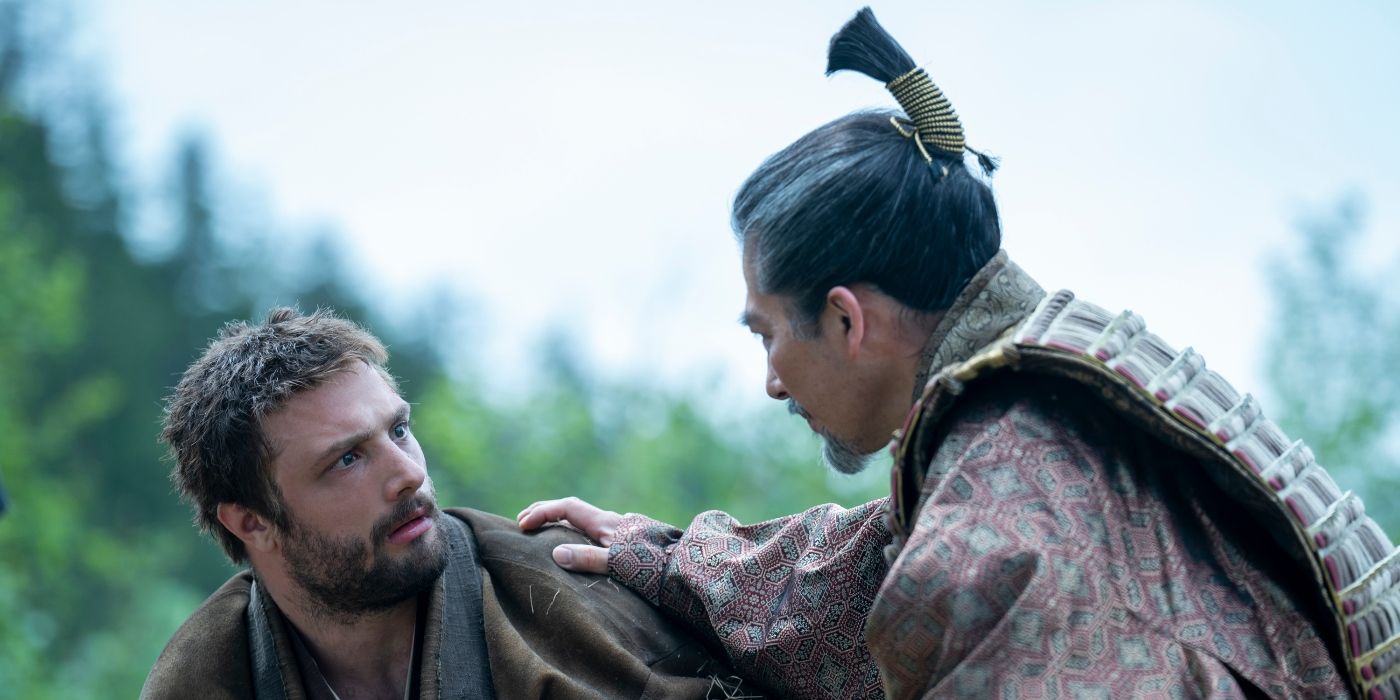Editor’s note: The below interview contains spoilers for the finale of Shōgun.
The Big Picture
-
Shōgun
‘s peaceful epilogue allows for reflection on the cost of victory in Tokugawa-era Japan. - Creators Rachel Kondo and Justin Marks aimed for authenticity by meticulously crafting pivotal character moments.
- Kondo and Marks discuss how their collaboration with Hiroyuki Sanada was essential, as well as the fact that adapting future James Clavell works hinges on surpassing expectations.
It may have come as something of a surprise when FX’s historical epic Shōgun concluded not with a hail of cannon fire or a clash of swords, but through the route of a somewhat more peaceful epilogue, allowing us as well as the characters to sit back and reflect on everything that’s happened up until now. While Lord Yoshii Toranaga (Hiroyuki Sanada) finally secured the support he needed in order to defeat his enemies, a victory of this magnitude didn’t come without a powerful cost. Many of Toranaga’s allies didn’t survive to see his ultimate triumph, including his most trusted general, Toda Hiromatsu (Tokuma Nishioka), his impulsive son, Nagakado (Yuki Kura), and his respected translator, Lady Toda Mariko (Anna Sawai) — whose death in the penultimate episode serves as the catalyst to turn the tide in Toranaga’s favor.
While James Clavell‘s novel has been adapted before, creators Rachel Kondo and Justin Marks knew they had a mammoth task on their hands when they were tapped to help develop the FX series in 2020, after the series was first announced back in 2018. Even once principal photography finally began in 2021, it would still be a long road until Shōgun, which FX heralded as one of its most ambitious series ever made, would be ready to premiere on the small screen. Catching up with Kondo and Marks ahead of the series finale, it’s clear that the two have pride in what they were able to achieve despite the overlong production process, but may not be completely ready to talk about the idea of a sequel season or next installment of a potential Shōgun anthology series.
What they were more than happy to discuss, however, is all of the biggest moments from the finale, “Chapter Ten: A Dream of a Dream.” Over the course of the interview, which you can read below, Kondo and Marks touch on their reaction to the response the show has earned — including memes — as well as what those Blackthorne flashforwards mean, why this has been Mariko’s story all along, and who was really responsible for the running joke of Yabushige (Tadanobu Asano) rewriting his will. They also discuss which of Fuji’s (Moeka Hoshi) best one-liners had to be cut from the finale, some of the biggest changes that were made from the book, and more.
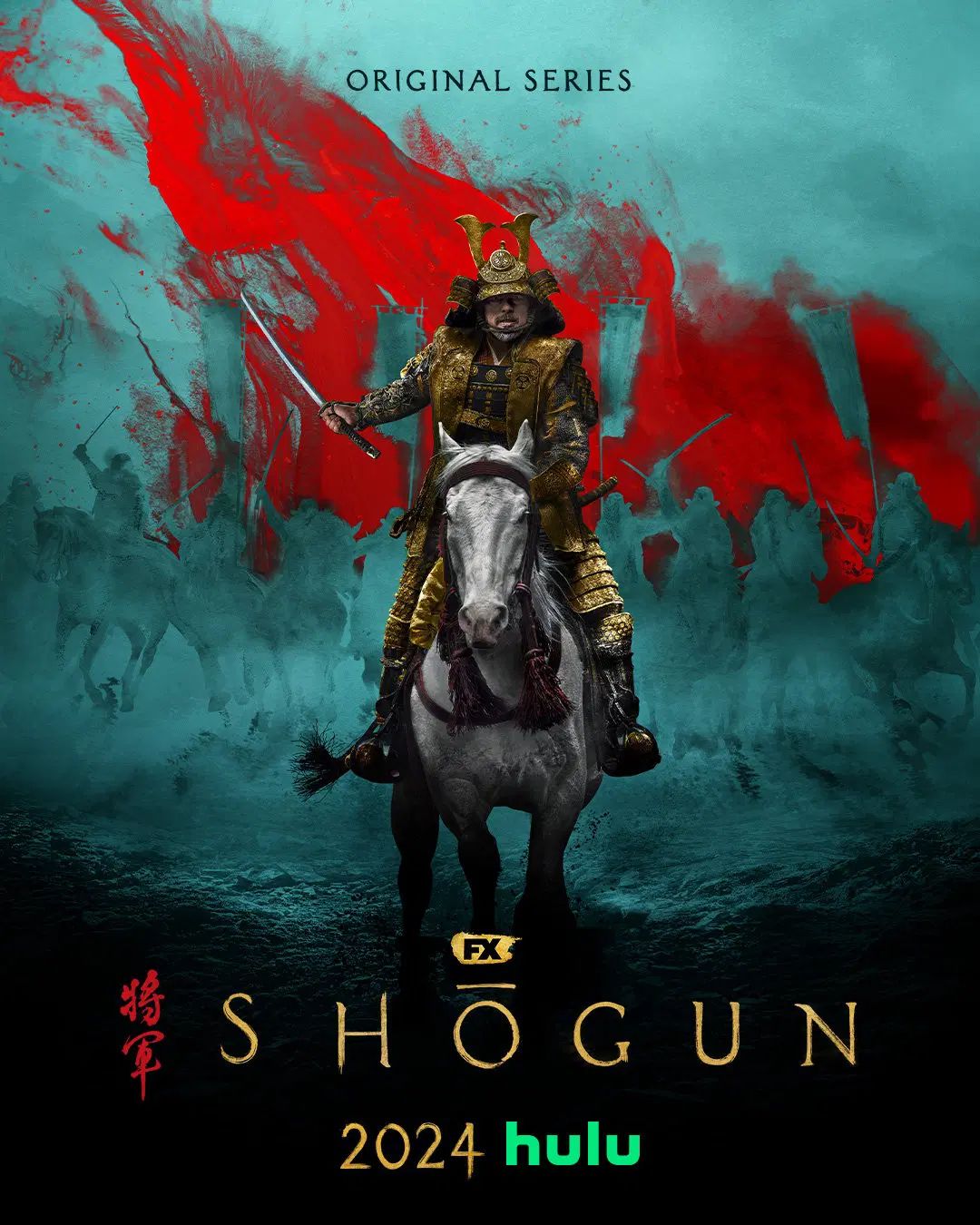
Shogun (2024)
When a mysterious European ship is found marooned in a nearby fishing village, Lord Yoshii Toranaga discovers secrets that could tip the scales of power and devastate his enemies.
- Release Date
- February 27, 2024
- Main Genre
- Drama
- Seasons
- 1
- Streaming Service(s)
- Hulu
COLLIDER: I’m a little emotionally devastated, but I feel like that’s par for the course after these last few episodes.
JUSTIN MARKS: I’m trying to think of something funny to say about it and I can’t.
One of my fellow journalists tweeted something like, “Where’s the emotional support group for Episode 8?”
MARKS: I needed a support group after Episode 8, because Hiromatsu was a tough one for me. He was the one, Tokuma-san, who, in the performance, just stole the role from our hearts. Then it was like, “We’re gonna have to kill this guy.” It really was tough. But, obviously, Mariko, I hear people like her, too.
‘Shōgun’s Creators Are Enjoying All Your Reaction Videos
Before we dive into finale specifics, I wanted to discuss the conversation around the show. Sometimes it’s hard to predict whether a show is going to become a watercooler hit, but it really feels like this has become a show that people make a point to watch every week, wanting to break it down, talk about the characters, talk about where the story is going. Are you paying attention to those reactions at all? Or are you trying not to really look at it and stay offline?
MARKS: No, we’re not trying to stay offline. What’s hard is we live in Hawaii, on Maui, and none of the chickens on our properties are talking about it, so it’s like there’s no watercooler. I’m so curious of, like, what is the watercooler anymore? Does it really exist? Is there one conversation anymore? I don’t know. I can’t imagine it has. But we’ve watched reaction videos of Nagakado’s death.
RACHEL KONDO: I didn’t know people filmed themselves watching something. To see people’s reaction to these things that, obviously, we painstakingly, moment-by-moment, frame-by-frame, had to make, so it’s taken out the juice for us, to see the reactions, I’m like, “Oh, my!”
MARKS: It’s super fun. For moments like that, it’s super fun when you know it’s coming. I discovered it on whatever episode with the cannon fire. Watching people react to the cannon fire was real fun. We had no idea people were going to react like that. Honestly, it didn’t feel like our biggest flex in terms of narrative anything. It’s just that that’s something that happened.
KONDO: We didn’t know people would react at all. I’m being honest. Maybe it’s because it felt like it would never come out, and then it did, and you just don’t know.
MARKS: So it’s nice that people are at least watching it.
Are you aware of the memes at all? People are memeing the show, posting on Twitter, making Photoshops of Blackthorne. Someone wrote a haiku about Nagakado’s death that was really funny.
KONDO: Wow!
MARKS: We had the memes, definitely. I’m gonna out Sofie [Somoroff], my assistant, and Caillin [Puente], one of the writer-producers on the show. There’s a line, “much woman,” that Blackthorne calls…
KONDO: “I see much woman,” in Episode 4.
MARKS: It was something that became a T-shirt around the production office at one point just to sort of keep that up. There’s a text thread in the writers’ room where we started to deposit things as people find them, but it’s nice because we have our own memes, our own Fuji reaction shots. There was a time where it was my only response to things on the text thread with Sofie, where I only wanted to respond to production problems in Fuji reaction gifs. So it’s like, “The horses aren’t gonna be ready in time to shoot the scene,” and I would just respond to her with the [reaction to] Blackthorne slurping noodles. So, it’s nice to see that those are out there because we needed some high-res gifs.
‘Shōgun’ Wouldn’t Have Happened Without Hiroyuki Sanada
I don’t think anyone would be surprised by the number of hats Hiroyuki Sanada wears as a part of the show, but they might not know the extent to which he was involved during so many facets of production. What was it like working with him as a producer and a creative partner as well as the lead of the show?
MARKS: I love your phrasing on how many hats he wore. His hat game on camera was one of my favorite things through production. It’s like, “This hat is awesome. There’s no way you’re gonna get Hiro to wear this hat,” and he was like, “Absolutely, I’m gonna wear this hat.” It happened time and time again.
KONDO: You would see the hat, and you’d be like, “Huh? Really? Okay.” Then, with Hiro under the hat, it makes abundant sense. When we were trying to do some of the press leading up to the show, we would say to people, “If you have more than one question for us, do not start with asking about Hiroyuki, because Sanada-san, we will just talk about him the whole time.” It’s hard to overstate how vital he was to this process. We wouldn’t be sitting here if he hadn’t joined, and if he hadn’t also poured himself into it the way he did. I mean, every frame has his stamp on it.
MARKS: A lot of what you really get with him is not just the wealth of experience he had in Japanese cinema from the time he was a child actor, but he’s been a witness in the 20-odd years of working in American cinema to all the mistakes we made. That was the thing that we were trying to react to as we were making the show. How can we make slight corrections to the way we tell these stories? He speaks both languages, and I don’t just mean literally speaks English and Japanese; he speaks both cinematic languages, and so he comes to it with an awareness of how both cultures make film and television. Neither culture really always wants to — we make shows the way we make shows. And so to try to build a new factory for doing it in a way that was kind of East meets West, there’s no better producer to do that than the person who’s worked in the East meets West for a very long time, so he could understand the way to take the best strengths of both.
There was the wig process on this show. There’s an Eastern wig style, there’s a Western wig style. The Eastern wig is like steel caps that come on very quickly so they can be produced in mass quantity for extras when you’re doing armies on screen. The problem is they don’t look that good in close-ups, necessarily. So we had to figure out ways to marry both in order to do it in this way because [with] the Western style of latex application, the problem is it takes forever to sit around. So the answer was a little bit of both, and I always loved that because it was a very elegant solution that we all, as a crew, came together on, with Hiro being a big voice in that process to say, “Let’s take the best of both and figure out a way to do something new with it.”
‘Shōgun’s Creators Explain Why the Show Is Actually Mariko’s Story
It speaks to the strength of the character work on the show where you can watch something like Episode 9, that he’s not even necessarily in, and everybody else is just firing on all cylinders. To that end, I wanted to ask about making Episode 9 so much of an ode to Mariko and Anna Sawai.
KONDO: I would say ode to her character, 100%. But what makes the ode as affecting as it is is the friendship she had with Ochiba as girls. Episode 9 is the other big thing. How do you talk about it word by word? How do you do it?
MARKS: Caillin and Rachel wrote it together, and I always felt like it was just the best when I first read it. We knew we had the goods. It comes in a great place in the book, to credit James Clavell as well as the writers’ room. It was a load-bearing post, and we could lean all the posts against it for the first eight episodes, and also Episode 10 on the other side, knowing that we had something that would land. Because Clavell really constructed this elegant ship in a bottle where there’s all these strings, and then you just pull one, and it just stands up beautifully in the way that it was done.
I think Rachel is right to point out that it hinges on the strength of the relationship between Ochiba and Mariko. To a certain extent, it also hinges on the audience at this point starting to key into the truth that should have been there on page one of the first episode, which is it’s actually her story. She emerges that way throughout, and Blackthorne, who is a bit of a feint in the beginning, he himself keys into the fact that it’s not his story in Episode 9. That, I think, was a really fun thing to construct.
KONDO: If I can tweak that a bit, I think it is the story of both Toranaga and Blackthorne discovering that it’s not their stories, and understanding that their stories are only going to be told almost through the telling of her story.
MARKS: Although Toranaga knew all along. I think he constructed this whole thing to sort of push her from the beginning, which is cool. But yeah, Blackthorne and the audience are kind of coming along for the ride.
Shifting ahead to the finale, I wanted to kick off by asking about the scenes of an aging Blackthorne. It looks like he’s on his deathbed essentially, and then there are moments where present-day Blackthorne seems to have the specter of his own mortality hanging over his shoulder. What was the intention in seeding those scenes throughout the finale?
MARKS: We had a lot of fun with that in the writers’ room. My last show, Counterpart — and a lot of writers from Counterpart came to Shōgun — was a really fun thing to do with parallel realities. We really love this conceit — because it’s not in the book in this case — of framing Blackthorne’s growth as having this scene where you think it’s a classic episode, the story now of an old man looking back. Now it’s all a flashback of his tales of, “Let me tell you about Japan.” And then, to realize that actually, no, it’s the projection of a young man looking forward and looking forward to a version of his life that he no longer wanted, and seeing it through that. And definitively, because he holds Mariko’s cross in that flash, and then he says goodbye to it by dropping that cross in the bay, thus rendering it not possible if you’re going to go by time travel logic. We really felt like it was an essential part of building to Blackthorne’s seppuku attempt, which was also not here in the book.
KONDO: The placement in the book was Chapter 31, which would have been in or around Episode 4, and that felt very early in the writers’ room, not only for Blackthorne as the character we were portraying in the show but also for us as a room. To wrap our heads around that felt very precarious.
MARKS: It didn’t feel right. It didn’t feel true. It didn’t feel honest with the storytelling that we were trying to do in series format — not that there was anything wrong with it in the book. It was simply this idea of him truly being able to understand seppuku at the point where he was in that story. We didn’t know if it was going to come back when we were developing it in the writers’ room. We simply said, “Let’s not do it here.” We felt that if it was going to happen, it would have to be right. It did eventually feel right, but I think the flash-forward structure was part of getting us there and understanding, “What if we could just build Blackthorne’s story to that point?” When it came together, it was like, “Of course. Now it’s inevitable that he would have to sort of do that.” And he’s bad at it. He’s not doing proper seppuku, believe me, but he is understanding how one can use life and death as a weapon towards expressing one’s will.
KONDO: And conviction. What you want to say with your life, and by taking it.
MARKS: He kind of came to that point, which is another little subtle invention that we did in the writers’ room in Episode 9, seconding Mariko. That was not in the book. It was actually Kiyama that did show up in the book.
KONDO: He showed up and said, “I’m not going to do this,” and he walked out. So she said she was going to do it herself, and everything happens. But to show his evolution as somebody who was trying to study this culture, we needed to have a precursor. He’s watching this woman for whom he has love and respect, and she’s about to do the most horrific and painful thing alone, and she’s determined to get out of the way of his will for her to live and his desire for her to live and his demanding her to live. And just to say, “Okay, I’m letting her have it, and I want to support her in it.” That’s a kind of selflessness.
MARKS: But he also sees her in that moment, because he sees and understands that for her to commit seppuku alone, which she was willing to do, it meant that she would be, by her system of faith that he does not believe in, submitting herself to eternal damnation. He spares her that damnation by standing up beside her, even if he doesn’t believe in it himself, because he’s not Catholic, which is the kind of gesture that Buntaro can never make, and fell short.
KONDO: And he’s able to see her because it’s the one moment that he can just quiet himself and his own point of view, right? This is what people struggle with… particularly males, should I say? But that’s zeroing yourself out. Eastern versus Western — at the end of the day, it’s just people and their impulses.
One of Fuji’s Best One-Liners Had To Be Cut From ‘Shōgun’s Finale
You’ve mentioned Blackthorne dropping the cross into the bay, and I was thinking about that scene with him and Fuji. Their relationship has such tenderness to it that evolves and grows through the series until that finale. Did you often look for ways to expand that dynamic in ways that the book doesn’t?
MARKS: I guess the answer is yes and no. Because yes, we added that scene at the end with Blackthorne and Fuji coming back into the story and setting it up, but no, in the sense that Fuji was always there in the book in every one of those scenes, and in fact, doing more in certain cases. That was the thing we in the writers’ room really loved, is that Mariko, Fuji, and Blackthorne had this very strange sort of spiritual throuple thing going that was really sometimes quite beautiful and sometimes quite cursed, and then also beautiful again.
KONDO: And then always awkward.
MARKS: And always super awkward. We always wanted to do a scene that we would never film, but in my heart, it’s filmed, and I can just see the reaction shot — you could go off Blackthorne and Mariko and the lovemaking there, and just pan off through the paper wall to Fuji sitting up in bed…
KONDO: And just hitting her head against the wall. “I can hear you!”
MARKS: They’re back on their bullshit again, and she’s got to deal with it. But that’s sort of her place in life. I think Fuji, what a rabbit out of a hat to have to get her to a place of a happy ending after all the things that she went through without turning her into a victim. Because I don’t think she ever was, and Clavell never made her one.
KONDO: Oh yeah. She very much was not a victim in the book. She had some one-liners that I wish we could have included in the show, but it just felt a little too out of left field. But some of those one-liners…
MARKS: We shot it because it’s my favorite line in the book, and Emily [Yoshida] was insistent on getting it in. “I enjoyed our time together, but ultimately, it had no harmony, and I’m glad for it to end,” is what she said. And she said it to him, and Blackthorne, who doesn’t understand a word of it, is like, “Uh huh. Yeah!” which was so funny in the scene, but at that point, too, it just didn’t fit that scene as it was shot in Episode 10, so we had to cut it.
Toranaga and Yabushige’s Final Scene Takes Place in a Very Familiar ‘Shōgun’ Location
In the scene between Toranaga and Yabushige, Toranaga basically lays out how the rest of this is going to go. We get the parallel of that line, “Why tell a dead man the future?” There are other parallels in them watching a previous sunset together, while Yabushige has to commit seppuku by sunset. It takes place by the cliffs, and Yabushige almost perished by the cliffs at the beginning of the show.
KONDO: We really appreciate it when people note these things because it very much was the desire of our hearts to bring about what beauty we could through the symmetry and through the callbacks, and to make it feel as considered as possible.
MARKS: And inevitable. This is a bit of trivia that I probably shouldn’t be saying from a continuity place, but the cliff where we shot that practically, on Bowen Island, that day toward the end of production, was actually the location where we shot the plates that we used for that cliff scene in Episode 1. If you look, it’s the exact same cliff, except for the top of it, which is completely different because we didn’t shoot that. We built the top of the cliff in Episode 1.
I remember Michael Cliett, our visual effects producer, was like, “We can’t shoot there because we shot that already for that place.” And I was like, “That’s okay.” First of all, the top of the cliff feels different, and also I wanted it to feel the same. Yabushige says in Episode 7, on the beach, “I always feel like I’m cursed to this. Every time I cheat death it comes back.” Because he’s so obsessed with cheating death, it’s kind of Blackthorne-y of him to think that he could ever cheat death.
KONDO: We should have worked it in that he says, “I want to die on this cliff.”
MARKS: We’ll go back to it. It was funny, I was just watching that great Charlie Kaufman movie, Synechdoche, New York, and there’s a line, “All of us know that death is coming, but all of us think, secretly, that we’ll avoid it.” And that’s Yabushige. He’s the one who does it. When he comes back to death on the place where he came the closest to it, that feels like, “Oh, okay, well, fuck you, universe. I guess here I am. So let’s do this,” which actually lent itself to his performance.
KONDO: Yabushige was so obsessed with a good death too, right? Or bad death. One of the two.
MARKS: Obsessed with death, nonetheless.
I spoke to Tadanobu [Asano] about the will, too, and how Yabushige is constantly writing and rewriting it over the course of the show. Did you ever decide what he’s changing on it?
MARKS: Let’s give credit where credit’s due. Tadanobu had this idea at the beginning of the season — I think it was Episode 2, or maybe early in Episode 3 — where he was just like, “I think I should always write wills. I think every day I start writing wills.” In Episode 3, he was writing the will, and he was like, “I think I do this all the time.” And so then we were just like, “Well, let’s just go with that because that sounds like really good fun. ‘It’s a good will. Our best one yet,’” was the early kernel of that, and then it just grew into a joke. Every time we got a chance to do another will joke, we would do it. In fact, I have his will actually mounted on my wall here in Kanji. Caillin gave it to me at wrap, and below it it says, “Not today,” in the engraving because it’s a great philosophy.
But that was Tadanobu and his take on the character to say, “I think I should be comically fixated on it.” Sometimes a great actor comes along and steals the character and does his own thing in a way that Tadanobu did. Among the greatest privileges I’ve ever had in this business was collaboration with him. He’s just so unpredictable and sideways in his approach. There are 9,000 bad versions of Yabushige that would have been played by great actors, and only one brilliant one, and he found it.
KONDO: Always in the will, though, was “Find my wife a good husband.” What? Where is she?
MARKS: Who could be married to this guy?
‘Shōgun’s Creators Would Only Adapt Another James Clavell Story If They Could Do It Justice
To wrap up, I know that you’ve very publicly said this is where the story ends. There’s no intention of doing a second season. On the other hand, Clavell has written many more novels in this saga, set in different periods. Would you be open to the possibility of doing an anthology format with different characters, adapting those stories?
MARKS: I gotta say, apropos of nothing, we are really digging Tai-Pan. It’s a great book. I picked it up to just see, “Can he strike lightning twice?” And it’s like, “Oh my god, he’s such a great writer that even this is great for entirely different reasons.” So, sure, maybe we’ll do Tai-Pan someday. It’s only a half-joke at this point, but who knows? I haven’t gotten to the end. But I think, truth be told, when it comes to Shōgun and those stories, it’s not that we wouldn’t, it’s just that if we did, it would have to be better than the book, and I don’t know if that story exists.
KONDO: The history exists.
MARKS: Yeah. And I think I’d be lying if I said that when we were all sitting on set at various times, we weren’t doing our own fanfiction fantasies of what it would be to tell certain stories sideways, or prequels, or maybe things that happened afterwards.
KONDO: Yabushige in London.
MARKS: Yeah, exactly. Things like that. But I don’t know if any of these are necessarily better than what was told, and I think to do it, — honestly, this is the sober, candid thing — it would have to be better. I’m not gonna say, “Well, we could never find that,” but I’m certainly saying we don’t have that now. Maybe I’m also saying it keeps me up at night sometimes, but it would have to be better.
Shōgun is available to stream on Hulu in the U.S.


